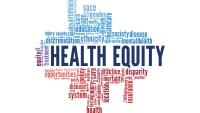Nursing is a dynamic profession, requiring enhanced professionalism and leadership skills to deal with the increased complexity of the healthcare needs of today and into the future. New nurses are often overwhelmed with transitioning from student roles into the role of professional nurses. They tend to focus on nursing as a job, not a profession.
In 2004, St. David’s HealthCare (SDH) developed the Specialty Nurse Accelerated Program (SNAP) Fellowship with emphasis on recruiting and educating nurses in specialty areas. However, SNAP is more than a training program. Based on Benner’s Novice to Expert model, the program is an innovative, intensive fellowship that uses proactive training approaches to accelerate the nurses’ transition, provide professional mentoring, and support advancement in leadership roles. SNAP increases confidence and critical thinking. It also promotes professionalism by embracing one’s own accountability, lifelong learning, and empowerment to lead change. This unique fellowship demonstrates positive results of 98% employment retention in year one.
Here is an overview of the program.
Eligibility
The SNAP 6-month fellowship occurs after a nurse’s 10- to 13-week orientation. To participate in the fellowship, nurses apply and are peer interviewed using behavioral questions geared at soliciting top performers and professional characteristics. A bachelor of science in nursing (BSN) is preferred, but not required. Although associate degree nurses (ADN) are accepted in the program, they are screened with emphasis on the commitment to enroll in a BSN program after completing the SNAP Fellowship.
Program components
The 2010 Institute of Medicines (IOM) report The Future of Nursing: Leading Change, Advancing Health, provided impetus for advancing nursing as a profession. The report provided eight key recommendations, five of which are integrated into the SNAP Fellowship and endorsed by SDH:
- Implement nurse residency programs.
- Expand opportunities for nurses to lead.
- Ensure nurses engage in life-long learning.
- Prepare and enable nurses to lead change to advance health.
- Increase BSN nurses to 80% by 2020.
By incorporating these professional aspects of nursing into our SNAP Fellowship, we have created ways to encourage nurses to step outside of their comfort zone and push themselves to excel at an early stage in their development. These nurses engage in committees, teach their colleagues, and proactively become involved in interprofessional teams as part of this development.
According to Twibell and her coauthors, key evidence-based elements of residency programs include professional socialization and opportunities for development, visibility of nurse leaders, time spent in an area outside of the home unit, opportunities for development, hands on learning, and mentoring and peer support. The SNAP Fellowship achieves these elements to promote professionalism and leadership development through the activities of organizational membership, specialty rotations, specialty classes, committee participation, nurse leader interaction, teaching opportunities, and evidence-based best practice project. Here is a closer look at each of these.
Organizational membership
The program pays for nurses’ 1-year membership to their national specialty professional organization. SNAP participants attend chapter meetings, are introduced to board members, and are encouraged to become actively involved. Once actively engaged, these nurses hold chapter board positions, present educational offerings at meetings, as well as present posters at local and national specialty conferences. The memberships promote lifelong learning and opportunities for continuous professional commitment.
Specialty rotations
The SNAP Fellowship consists of 11 specialty tracks. The curriculum is a hybrid model that includes specialty-specific clinical rotations, classes, simulations, and online educational content. Monthly clinical rotations promote interprofessional collaboration and increased engagement. SNAP fellows select and schedule pertinent rotations with other professionals such as chief nursing officers (CNOs), physicians, directors, respiratory and physical therapists, and nurse practitioners. Also, SNAP fellows participate in ride-outs with ambulance crews and rotate to other departments such as laboratory, pharmacy, case management, and a variety of nursing departments within our multi-facility partnership. The rotations and feedback are tracked on a “SNAP Collaboration Site,” which improves communication and sharing of ideas among their group. These experiences provide a better understanding of healthcare system issues, which enhances the nurse’s role as liaison and advocate, thereby improving safety and quality patient care.
Specialty classes
Specialty classes provide evidence-based content with direct linkage to clinical experiences. During presentations, clinical experts from different hospitals and various multidisciplinary professions use case studies, research, and specialty certification-type questions. By incorporating these questions, new nurses state they are excited about a future goal of obtaining specialty certification. In addition, hands-on learning and critical thinking are incorporated with scenarios in the simulation lab. Online education with specialty content allows flexibility as SNAP participants learn at their own pace and maintain work-life balance.
Committee participation
Throughout the fellowship, SNAP nurses are encouraged to broaden their scope of influence by participating in hospital committees as well as teaching opportunities. These activities improve effective communication and enhance professional presentation skills. Committee involvement promotes insight into hospital operations and gives the nurse a voice in decision making. SNAP nurses also present comprehensive patient case studies to review diagnosis, treatment, and care of a patient to their colleagues and units. This encourages critical thinking discussions as overall care of the patient is evaluated. Committee involvement and teaching opportunities prepare SNAP nurses to visualize themselves as leaders early in their profession.
Nurse leader interaction
An important element of SNAP is nurse leader visibility. The CNOs and hospital leaders present topics focusing on conflict management, professionalism, and succession planning. They discuss means to pursue future goals, the future of nursing, and their personal challenges and successes during their career advancement. SNAP Achievement Awards are presented by CNOs at SNAP Alumni Reunions to increase engagement and recognize high performers.
Teaching opportunities
SNAP fellows are coached and encouraged to teach future SNAP fellows. After graduating from the program, they can present their case studies and best practices to a new group of fellows. They also explain the fellowship and answer questions from the new group. SNAP nurses also are asked to teach content and skills in the nurse residency program and some content in the SNAP fellowship program.
Evidence-based best practice project
The final component of the fellowship involves developing, implementing, and presenting an evidence-based best practice project for their respective units. These projects meet the criteria for the Quadruple Aim, which is a framework developed by the Institute for Healthcare Improvement to optimize healthcare performance. The best practice projects are designed to improve unit outcomes by boosting quality of patient care, decreasing cost, enhancing staff satisfaction, and/or increasing efficiency within the system.
SNAP fellows have the opportunity to identify an issue, research solutions, translate evidence into practice, manage collaborative efforts with health team members, and become an agent of change. Unit leaders collaborate with the SNAP participants to approve and support their projects.
Examples of successful projects are hypoxic baby cooling protocols, computer documentation changes, an improved unit-based patient-charging system, and the startup of professional nursing chapters in our area. These projects are presented to their colleagues, nurse leaders, and CNOs and are then posted on the hospital intranet for our system employees to view, share, and implement. The best practice process contributes to the IOM’s recommendation for lifelong learning.
SNAP fellows state they are “surprised how hard it is to get people to change” and “what a process it is to get something approved” when they are attempting to implement their projects. Many SNAP participants continue to implement other changes on their units after graduation from the fellowship. In addition, two SNAP projects won Innovation Awards for their hospitals, and those nurses will be presenting posters of their projects at a St. David’s nursing leadership conference.
Wrapping up
At the end of the fellowship, nurses participate in a succession planning meeting including a career advancement program (CAP). The CAP is designed as an innovative resource with information on financial, academic, and career development opportunities for staff.
Continued success as a professional
We expect nurses at SDH to consider nursing as a profession, not just as a job. SNAP fellows are developed early on as future leaders within our facilities. They report higher levels of engagement and confidence, as well as satisfaction and empowerment after participating in the SNAP fellowship. The nurses state they are more autonomous, feel more confident dealing with physicians, and believe they can make important contributions and changes—even as a new nurse. That view carries over to participation in committees. A survey found that 61% of SNAP nurses participate on committees, compared to 30% of non-SNAP nurses. Anecdotally, after SNAP clinical rotations were implemented, unit leaders noted improved relations between nursing and other departments.
By incorporating professionalism and leadership aspects into the SDH SNAP Fellowship, the nurses develop in a collaborative and supportive environment using a network of health professionals to grow intellectually and professionally as new nurses. SNAP fellows develop the ability to analyze, synthesize, and use knowledge gained during the fellowship. They become well-rounded nurses who are creative and critical thinkers and problem solvers. Many become preceptors, charge nurses, supervisors, managers, and directors. For example, we found that 67% of SNAP nurses become preceptors, in their first 1 to 2 years, compared to 27% of non-SNAP nurses.
As a recent SNAP graduate said, “I never imagined that—within my first year—I would be a member of a professional organization; on a hospital committee; completing extensive continuing education; and implementing a project to improve my unit. Meeting these high expectations gave me increased confidence as a new nurse. I feel that I’ve hit the ground running, and am that much closer to the next step in my career.”
Selected references
Benner P. From Novice to Expert: Excellence and Power in Clinical Nursing Practice. Upper Saddle River, NJ: Prentice Hall Health; 2000.
Institute for Healthcare Improvement. IHI Triple Aim Initiative: Better Care for Individuals, Better Health for Populations, and Lower Per Capita Costs.
Institute of Medicine. (2010). The future of nursing: Leading change, advancing health. October 5, 2010; updated October 5, 2015.
Twibell R, St. Pierre J, Johnson D, et al. Tripping over the welcome matt: Why new nurses don’t stay and what the evidence says we can do about it. Am Nurse Today. 2012;7(6).
Karen Jeffries is clinical education specialist and Gail Acuna is director of the Academy for Clinical Excellence at St. David’s HealthCare Institute of Learning in Austin, Texas.


















